 by our College Data Analytics Team
by our College Data Analytics TeamUNO total enrollment is approximately 8,375 students. 5,060 are undergraduates and 791 are graduate students.
Male/Female Breakdown of Undergraduates
The full-time UNO undergraduate population is made up of 52% women, and 48% men.
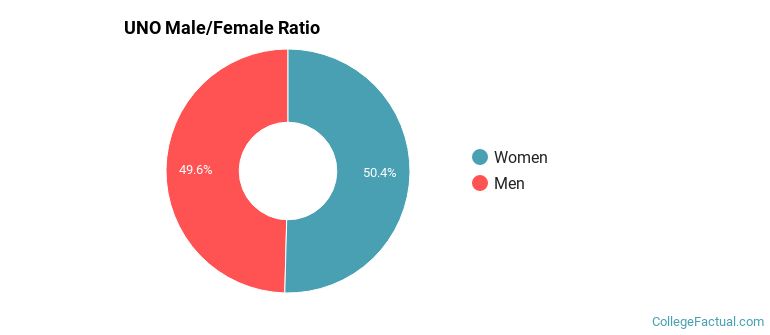
For the gender breakdown for all students, go here.
UNO Racial/Ethnic Breakdown of Undergraduates

| Race/Ethnicity | Number |
|---|---|
| White | 2,306 |
| Black or African American | 1,194 |
| Hispanic | 628 |
| Asian | 415 |
| Multi-Ethnic | 228 |
| Unknown | 144 |
| International | 125 |
| Native Hawaiian or Pacific Islander | 4 |
See racial/ethnic breakdown for all students.
Male/Female Breakdown of Graduate Students
About 58% of full-time grad students are women, and 42% men.
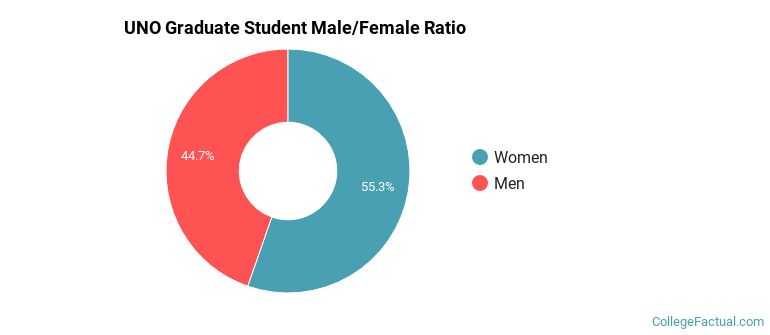
For the gender breakdown for all students, go here.
UNO Racial-Ethnic Breakdown of Graduate Students
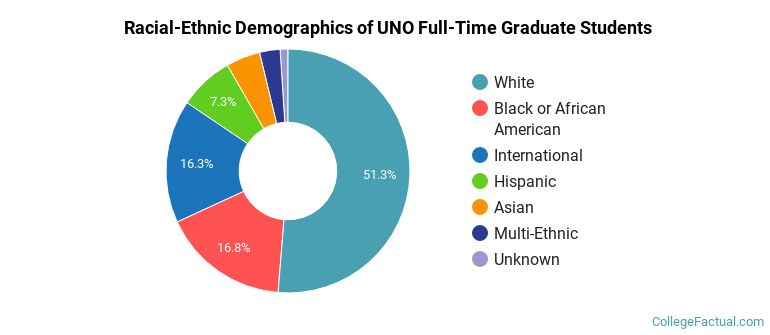
| Race/Ethnicity | Number |
|---|---|
| White | 392 |
| Black or African American | 142 |
| International | 113 |
| Hispanic | 67 |
| Asian | 40 |
| Multi-Ethnic | 21 |
| Unknown | 13 |
| Native Hawaiian or Pacific Islander | 0 |
See racial/ethnic breakdown for all students.
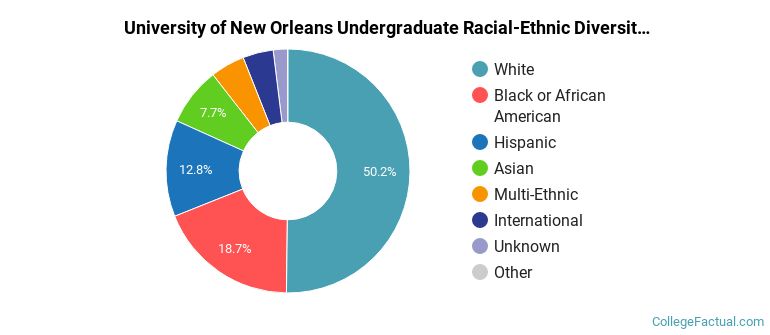
| Race/Ethnicity | Number |
|---|---|
| White | 4,052 |
| Black or African American | 1,795 |
| Hispanic | 1,009 |
| Asian | 605 |
| Multi-Ethnic | 348 |
| International | 301 |
| Unknown | 233 |
| Native Hawaiian or Pacific Islander | 7 |

There are approximately 4,440 female students and 3,935 male students at UNO.
UNO ranks 1,201 out of 2,183 when it comes to geographic diversity.
7.82% of UNO students come from out of state, and 2.05% come from out of the country.

The undergraduate student body is split among 24 states (may include Washington D.C.). Click on the map for more detail.
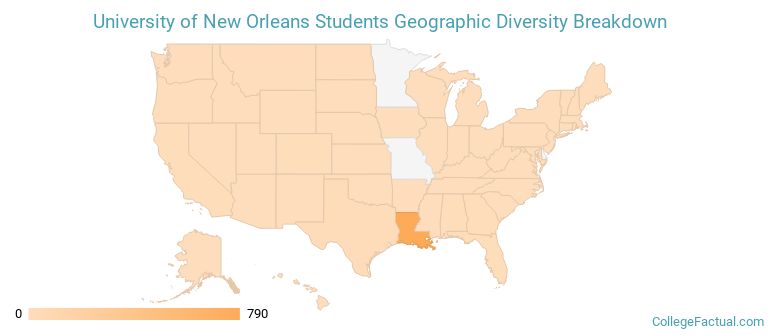
| State | Amount |
|---|---|
| Louisiana | 790 |
| Texas | 16 |
| Florida | 6 |
| Alabama | 5 |
| California | 4 |
Students from 81 countries are represented at this school, with the majority of the international students coming from India, Saudi Arabia, and Nepal.
Learn more about international students at UNO.
A traditional college student is defined as being between the ages of 18-21. At UNO, 38.56% of students fall into that category, compared to the national average of 60%.
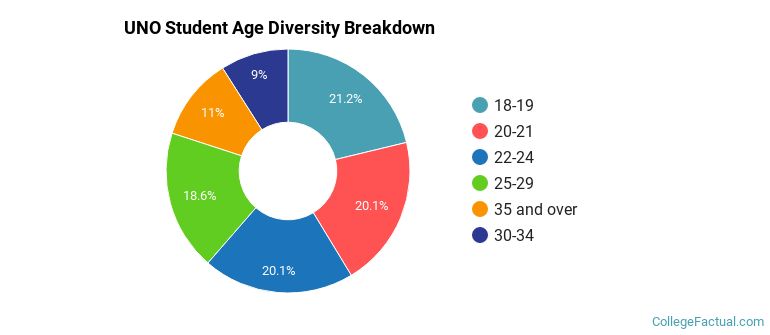
| Student Age Group | Amount |
|---|---|
| 18-19 | 1,578 |
| 20-21 | 1,493 |
| 22-24 | 1,492 |
| 25-29 | 1,384 |
| 35 and over | 815 |
| 30-34 | 670 |
| Under 18 | 0 |
Footnotes
*The racial-ethnic minorities count is calculated by taking the total number of students and subtracting white students, international students, and students whose race/ethnicity was unknown. This number is then divided by the total number of students at the school to obtain the racial-ethnic minorities percentage.
References
Department of Homeland Security Citizenship and Immigration Services
Image Credit: By Infrogmation of New Orleans under License
Find out how College Factual created their Diversity Rankings.